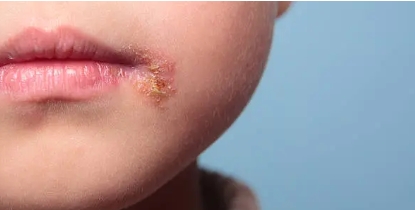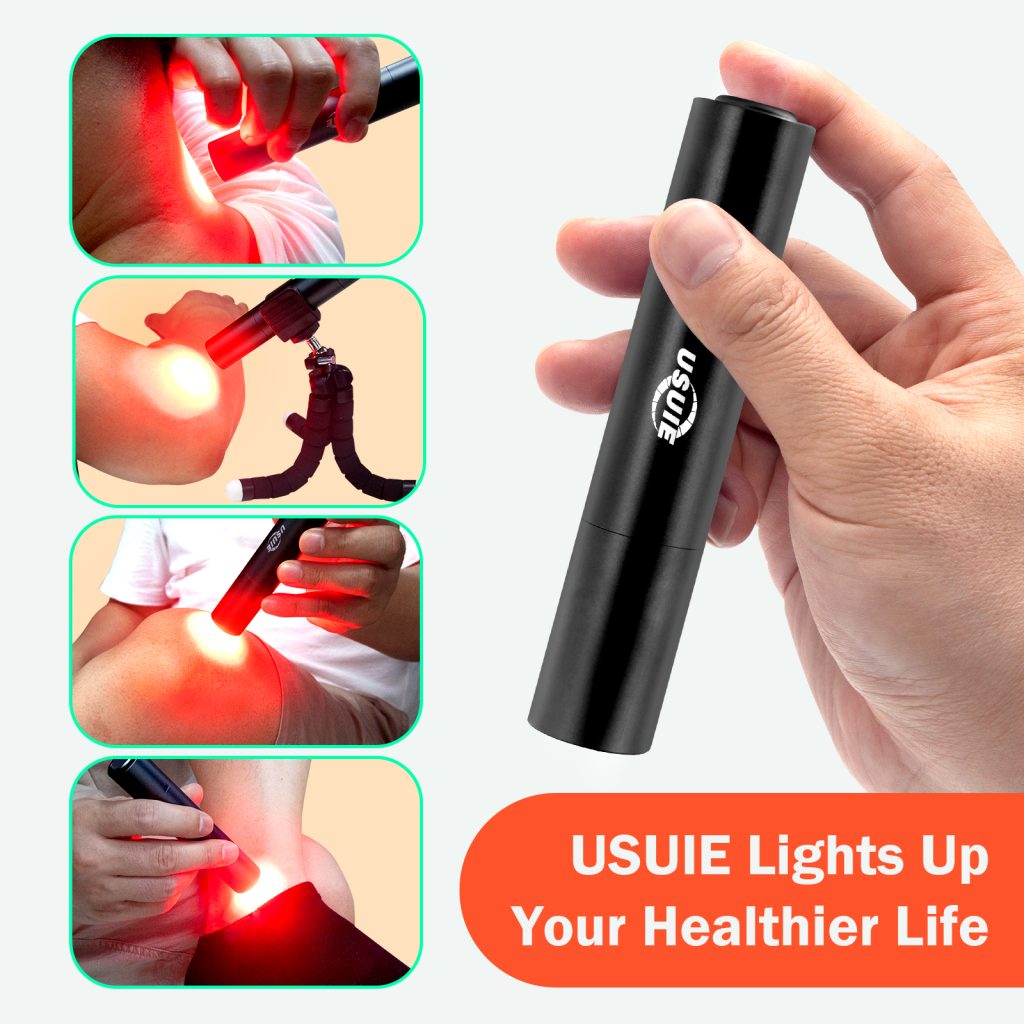Are you tired of dealing with the pain and embarrassment of cold sores? If so, you’ll be thrilled to learn about the best red light therapy for cold sores.
Cold sores, also known as fever blisters, are caused by the herpes simplex virus and can be uncomfortable. Conventional treatments often involve medications that only provide temporary relief. However, red light therapy is emerging as a highly effective and natural alternative.
By using specific wavelengths of red light, this therapy can help reduce the duration and severity of cold sores. Not only does it promote faster healing, but it also provides soothing relief from pain and inflammation.
This article will explore the best practices for using red light therapy for cold sores and the key findings on its effectiveness. Say goodbye to cold sores and hello to a pain-free, confident smile with red light therapy.
What Are Cold Sores?
Cold sores are small blisters that typically appear on or around the lips and are caused by the herpes simplex virus. Various factors, including stress, fatigue, sun exposure, and hormonal changes can trigger them.
Symptoms of cold sores include tingling or itching sensations, followed by the formation of painful blisters that can last for about a week before crusting over and healing.

Definition and Causes
Caused by the herpes simplex virus, cold sores are unsightly and painful blisters that can benefit from the soothing effects of red light therapy. Red light therapy, or low-level laser therapy, is a non-invasive treatment that uses specific wavelengths of red light to stimulate healing and reduce inflammation.
It increases blood circulation and promotes collagen production, which helps speed up the healing process. The red light therapy devices emit a gentle, warm light that is safe for use on the skin and can be applied directly to the affected area.
This therapy has been found to reduce the duration and severity of cold sores, providing relief from pain and discomfort. It is a convenient and effective option for treating cold sores at home.
Symptoms and Outbreak Triggers
One of the most frustrating aspects of dealing with cold sores is the unpredictable nature of their outbreaks and the various triggers that can set them off.
Cold sores, also known as fever blisters, are small, painful, fluid-filled blisters on or around the lips. The symptoms of a cold sore outbreak include tingling, itching, and a burning sensation around the affected area. These symptoms are often followed by the appearance of small, red bumps that quickly turn into blisters.
Common triggers for cold sore outbreaks include stress, fatigue, hormonal changes, exposure to sunlight, and a weakened immune system. Understanding and identifying these triggers can help you better manage and prevent future outbreaks.
Conventional Treatments
This discussion will explore the conventional treatments available for cold sores. Healthcare professionals often prescribe medications to help alleviate the symptoms and speed healing.
Additionally, there are various home remedies that you can try to manage cold sores on your own.
Medications
There’s no better option for the best relief from cold sores than using medications specifically designed to target and heal these pesky sores. Antiviral medications, such as acyclovir, valacyclovir, and famciclovir, are commonly used to treat cold sores. These medications work by inhibiting the replication of the virus responsible for causing cold sores. They can help reduce the duration and severity of outbreaks and alleviate symptoms like pain and itching.
Over-the-counter creams and ointments containing docosanol or benzyl alcohol can also effectively treat cold sores. These topical medications work by forming a protective barrier on the skin, preventing the virus from spreading and promoting healing.
Always consult with a healthcare professional before starting any medication for cold sores.
Home Remedies
To effectively manage and alleviate the discomfort of cold sores, you can explore various home remedies that have proven beneficial.
One popular home remedy is applying a cold compress to the affected area. This can help reduce inflammation and relieve pain.
Another option is aloe vera gel, which has soothing and healing properties.
Applying a thin layer of honey onto the cold sore can also help speed up the healing process.
You may also find relief by using over-the-counter lip balms or creams containing ingredients like docosanol or benzocaine.
It’s essential to remember that while these home remedies can provide relief, they may not eliminate the cold sore.
If your symptoms persist or worsen, it’s recommended to consult a healthcare professional for further guidance.
Best Practices for Using Red Light Therapy for Cold Sores
Preparing correctly before starting red light therapy for cold sores is essential. It includes cleaning the affected area with a gentle cleanser and ensuring the skin is dry before treatment.
Hold the device about 1-2 inches away from the cold sore when applying the therapy. Move it in a circular motion for about 3-5 minutes.
While red light therapy is generally safe, it’s essential to be aware of potential side effects like skin irritation or temporary redness. Follow the safety guidelines provided by the manufacturer.
A. Pre-Treatment Preparation
Get ready to treat your cold sores with the best red light therapy by following these simple pre-treatment steps.
First, thoroughly clean the affected area with a gentle cleanser and warm water. Pat it dry gently with a clean towel.
Next, apply a thin layer of petroleum jelly or a similar protective ointment around the cold sore to prevent the light therapy from drying out your skin.
Then, carefully position the red light therapy device about 1 inch away from the cold sore. Please turn it on and set the timer according to the instructions provided.
During the treatment, please keep your eyes closed or use protective goggles to shield them from the light.
Once the treatment is complete, gently remove excess ointment and dispose of used materials.
B. Application Techniques
Now that you’ve prepared yourself for the red light therapy treatment let’s dive into the application techniques that’ll help you get the best results for your cold sores. Using a red light therapy device is a breeze and a quick and straightforward process.
All you need to do is position the device about 1-2 inches away from the affected area and turn it on. Keep your eyes closed and avoid looking directly at the light. Gently move the device around the area for about 3-5 minutes, ensuring the light covers the entire cold sore. This targeted approach helps to stimulate healing and reduce inflammation.
With these easy application techniques, you’ll be well on your way to soothing those pesky cold sores in no time.
C. Potential Side Effects and Safety Considerations
If you’re considering red light therapy for your cold sores, you must know the potential side effects and safety considerations. While red light therapy is generally considered safe and well-tolerated, there are a few things to remember.
First, following the recommended treatment guidelines and staying within the recommended duration and frequency of sessions is crucial. Using red light therapy for longer or more frequently than advised may lead to skin irritation or burns.
Protecting your eyes during the treatment is essential, as direct exposure to red light may cause eye damage. Always wear protective eyewear or cover your eyes with a towel to ensure safety.
Suppose you have any pre-existing eye conditions or are taking medications that increase sensitivity to light. In that case, it’s essential to consult with a healthcare professional before starting red light therapy for your cold sores.

Key Findings on Red Light Therapy for Cold Sores
One of the critical findings of red light therapy for cold sores is that it can effectively reduce the healing time. Studies have shown that when red light is applied to cold sores, it stimulates collagen production and increases blood flow to the affected area. This promotes faster healing and helps to reduce the duration of the cold sore outbreak.
Additionally, red light therapy has been found to have antiviral properties, which can help to inhibit the replication of the herpes simplex virus that causes cold sores. It can lead to a decrease in the severity of symptoms and a quicker recovery.
These findings suggest that red light therapy can be a beneficial treatment option for individuals suffering from cold sores.
Conclusion
So there you have it – red light therapy can be an excellent option for treating cold sores. A device like a red light therapy wand or panel can target the affected area and help reduce the healing time.
Remember to follow the best practices mentioned earlier, such as using the therapy for a few minutes each day and maintaining good hygiene. With consistent use, you’ll be able to experience the benefits of red light therapy and say goodbye to those pesky cold sores.
